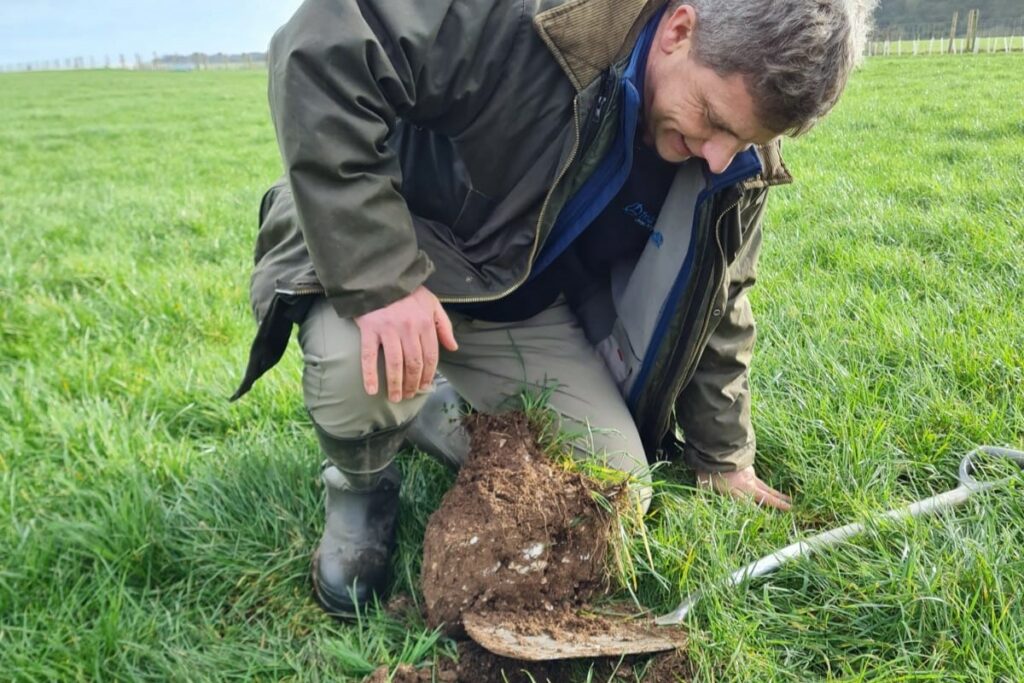Make the most of SFI funding with better soil care
6th March 2023
Understanding soil structure and nutrient content will be key to farmers meeting the new Sustainable Farming Incentive (SFI) ‘arable soils’ standard and supporting future crop growth, according to David Newton, technical manager at Timac Agro.

David Newton, Timac Agro technical manager.
Mr Newton acknowledged that, while SFI funding aims to encourage activities which improve soil health, it can be hard to know where to begin.
“Under the current guidelines, farmers and growers can receive £22/ha at an introductory level, or £40/ha at an intermediate level for the ‘arable and horticultural soils’ standard, so it’s well worth investing in your soil health,” he said.
To help farmers get started, Mr Newton shared his top tips for meeting the new arable soils standard:
- Take soil testing to the next level
Mr Newton recommends conducting a thorough soil test on the farm instead of only testing for basic nutrients and seeking advice from someone who can interpret the soil analysis results.
“Don’t just test for soil pH and macronutrients (nitrogen, phosphorus and potassium) – the scheme requires a test for organic matter levels, so why not test trace elements and assess your soil structure at the same time?” he suggested.
- Understand your soil type
“Understanding your soil type means understanding its advantages and challenges; how best to work with it and improve its health and biology,” Mr Newton explained.
Soil type influences structure and determines the soil’s capacity to retain nutrients and water, as well as its workability.
According to Mr Newton, lighter, sandier soils tend to be more acidic and prone to leaching due to their porous nature. They can also have lower organic matter levels, which has a direct effect on soil biology.
Meanwhile, heavier clay soils are more prone to compaction and poorer drainage due to smaller particle size and are also heavier to work. On the other hand, they are often more fertile and retain organic matter more efficiently, Mr Newton pointed out.
Therefore, understanding the type of soil on which we farm is key to improving soil structure and subsequently enhancing production.
- Understand your trace elements
Mr Newton reminded farmers that crops require a range of essential nutrients for growth, which highlights the need for a more detailed soil analysis. Determining sulphur, calcium, manganese, copper, iron and boron levels in the soil can be useful in predicting deficiencies and limitations to plant growth in the future.
- Maximise your soil biology
Encouraging soil biology to thrive is paramount to soil processes, such as the mineralisation of organic matter to provide nutrient availability for plants, Mr Newton explained.
“Using a soil conditioner, such as Humistart+, can help provide a better environment for fungi and bacteria to thrive, in turn encouraging rapid break down of organic matter and the release of nutrients.”
- Maximise nutrient efficiency
Gaining a better understanding of soils and adopting practices that improve soil biology and fertility will lead to maximised nutrient use efficiency, Mr Newton said.
“Under the current circumstances where the cost of fertiliser is still high, improving your nutrient use efficiency is paramount, as well as reducing risks such as soil run-off and leaching – an ultimate goal the SFI standards are wishing to achieve,” he added.
For more information, visit: Humistart+ – TIMAC AGRO UK
